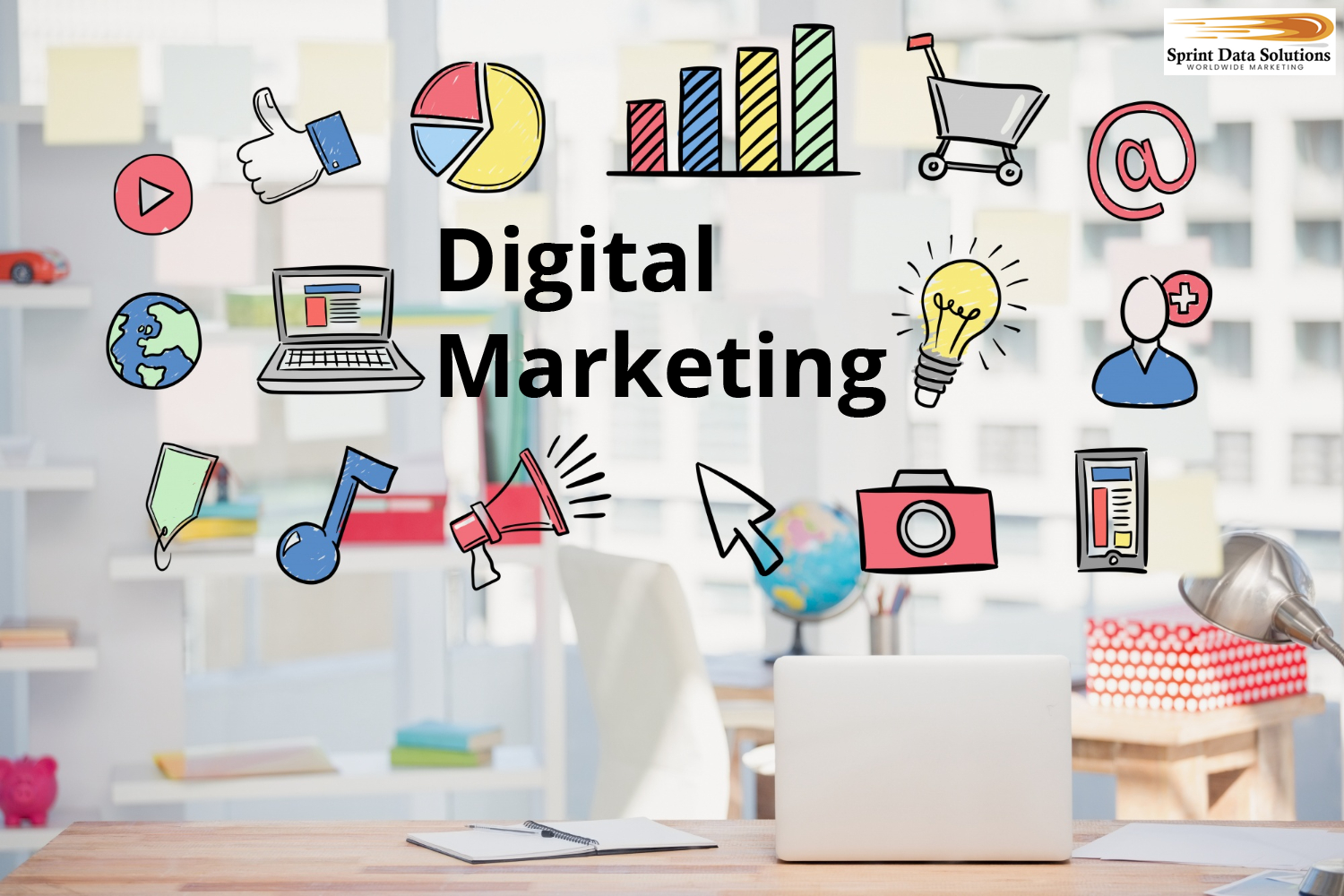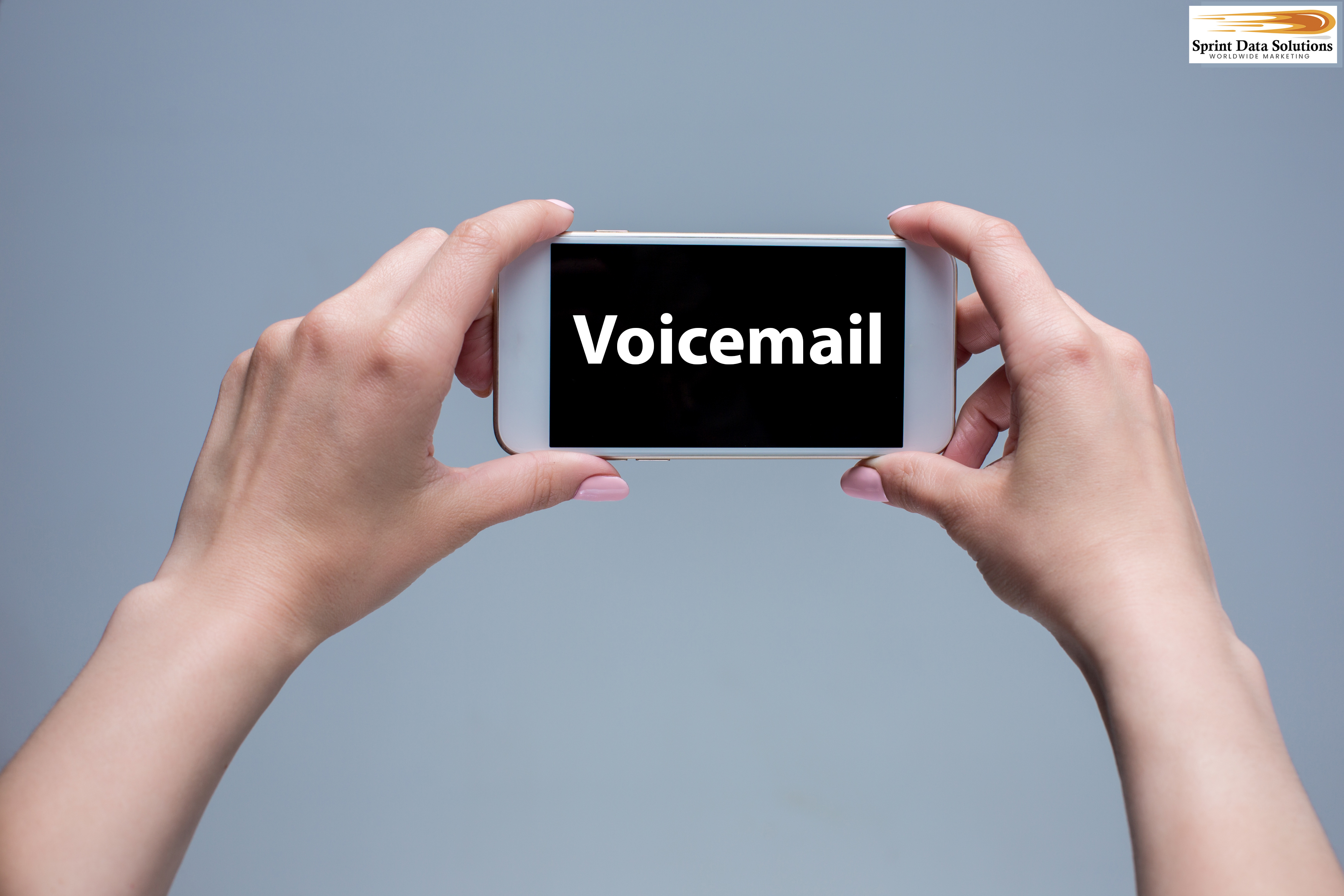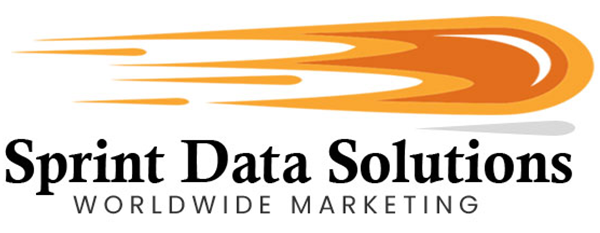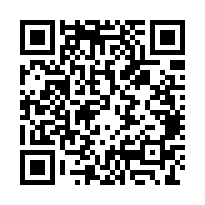Digital Marketing Is The Next Channel For The 21st Century
The concept of marketing has undergone significant transformation over the centuries, closely tied to the evolution of media and communication technologies. In the 19th century, marketing primarily relied on print media such as newspapers, pamphlets, and catalogs—an era shaped by the rise of the printing press and mass literacy. These static formats allowed businesses to reach local and regional audiences with text-heavy advertisements. The 20th century ushered in a revolution with the advent of broadcast media—first radio, then television. Radio introduced the power of auditory persuasion, enabling marketers to build emotional resonance and real-time connection with listeners. Television further expanded the marketer’s toolkit by adding visual storytelling, movement, and sound, making it possible to demonstrate products in action and craft highly engaging brand narratives. This shift allowed for broader audience reach, more dynamic advertising strategies, and greater emotional impact, fundamentally altering the way companies communicated with consumers.
In the 21st century, marketing has undergone a transformative evolution, shifting its focus from simply enhancing the fidelity of visual or auditory experiences to harnessing the power of data-driven precision. The real revolution lies in granularity—achieving unprecedented levels of specificity in identifying and engaging target audiences. Digital platforms now serve as comprehensive ecosystems, integrating the capabilities of traditional print, broadcast, and direct marketing with cutting-edge analytics, machine learning, and automation. These platforms not only extend the potential reach to global audiences but also enable tailored messaging that resonates with individuals on a personal level, based on demographics, behaviors, and predictive intent.
This highly customized approach allows businesses to generate significantly higher engagement and conversion rates by appealing directly to the needs and interests of smaller, more qualified audience segments. It’s a smarter, more efficient form of marketing that maximizes return on investment. Sprint Data Solutions Worldwide Marketing specializes in this modern paradigm—empowering businesses to tap into data-rich strategies for highly targeted outreach, ensuring their message reaches the right people, at the right time, with maximum impact.

What Sprint Data Solutions Worldwide Marketing Is
Sprint Data Solutions Worldwide Marketing was founded on the vision of a disabled veteran determined to build a company that could adapt to a rapidly changing marketing landscape. Launched just before the digital marketing revolution took hold, the company initially operated in an era dominated by traditional media—television, print, and radio advertising remained the standard channels for reaching consumers. Yet, it was clear to industry observers that digital platforms would eventually redefine how businesses connect with their audiences.
The company’s early focus was on direct mail marketing, a discipline that demands precision in data acquisition, targeting, list management, and campaign analytics. These core competencies positioned Sprint Data Solutions uniquely well when digital marketing technologies began to mature. While many organizations struggled to bridge the gap between analog and digital, Sprint had already cultivated the data-centric mindset necessary for effective online campaigns.
Recognizing the shift, Sprint Data Solutions quickly evolved. It expanded its offerings to include email marketing, programmatic advertising, and search engine strategies, while still supporting clients with robust traditional marketing tools. Thanks to its early adoption and deep expertise in data handling, the company capitalized on the digital transition faster than most of its competitors. As a result, it secured a strong foothold in a growing market, delivering measurable results for a diverse client base across industries.
Today, Sprint Data Solutions Worldwide Marketing stands as a comprehensive marketing partner—leveraging both traditional and cutting-edge digital tools to help clients achieve meaningful, data-driven engagement with their audiences. Its journey is not just one of adaptation but of innovation and foresight, grounded in the founder’s resilience and a steadfast commitment to staying ahead of the curve.
The Digital Marketing Difference
Digital marketing represents a transformative shift in how businesses approach promotion, particularly when compared to traditional advertising methods. One of the most defining advantages of digital marketing lies in its ability to deliver precise, actionable data. Unlike traditional media—such as television, radio, or print—where broad reach is prioritized over granularity, digital marketing thrives on specificity and measurability. Television advertising, for instance, can expose a message to millions, but it offers limited insight into actual viewership. Advertisers cannot determine with certainty how many people saw the ad, paid attention to it, or took any action as a result. Any assumptions about performance must rely on estimations, audience sampling, or indirect metrics like ratings, which may not accurately reflect real consumer behavior or conversion outcomes.
Digital marketing, on the other hand, is built on a foundation of data and interactivity. Every digital action—whether it’s opening an email, clicking on a banner, making a purchase, or visiting a website—can be monitored, recorded, and analyzed. This innate trackability isn’t a bonus; it’s a fundamental aspect of how digital platforms operate. Without the ability to track and process data, digital systems wouldn’t function properly, as responsiveness to user input is core to their design. This has revolutionized marketing by providing unprecedented visibility into consumer behavior, preferences, and engagement patterns, allowing for highly targeted and adaptive strategies.
Take, for example, the contrast between traditional direct mail and email marketing. With physical mail, there’s an inherent uncertainty. A promotional flyer might be delayed, misplaced, or discarded before reaching the intended recipient. The business sending it cannot definitively know whether the lack of response is due to disinterest or a delivery issue. In contrast, email marketing offers real-time delivery reports, bounce-back notifications for undelivered messages, and detailed engagement analytics. Marketers can track open rates, click-through behavior, and conversions with pinpoint accuracy. More advanced techniques, such as UTM tracking and personalized URLs, even allow businesses to identify the exact user who engaged with an email campaign, what action they took, and from which geographical location—all of which feed back into improving future campaigns. This level of feedback turns marketing into a data-driven engine, enabling more efficient budget allocation, refined audience segmentation, and better overall ROI.
Multi-Media
Unlike traditional marketing methods, digital marketing is not constrained by the type of media it utilizes. Traditional formats each come with inherent limitations—print lacks audio or motion, radio is restricted to sound alone, and video, while visually dynamic, cannot facilitate real-time, two-way interaction as telemarketing can. Digital marketing transcends these barriers by integrating all forms of traditional media and enhancing them with additional capabilities, making it a truly versatile and powerful tool for engagement and promotion.
Take email marketing as a prime example. While it can be as simple as plain text, it also has the capacity to include visually engaging elements such as high-resolution images, infographics, and branded color schemes. Moreover, emails can feature clickable links that direct users to external websites or landing pages, host embedded videos and audio clips, and even incorporate interactive components like polls or surveys. More sophisticated implementations might integrate live chat features or AI-powered chatbots, allowing for real-time customer service, automated responses to FAQs, and a more personalized user experience.
But the reach of digital marketing extends far beyond email alone. Today, it spans a broad array of platforms and devices, including smartphones, tablets, and even wearable tech. Mobile marketing strategies encompass SMS campaigns, in-app advertisements, push notifications, geolocation-based promotions, and QR code interactions. Social media, search engines, streaming platforms, and content networks all serve as additional digital touchpoints, each offering unique formats and opportunities for brands to connect with their audiences. These innovations make digital marketing not only more flexible but also more targeted, data-driven, and scalable than any of its traditional counterparts.
Email Marketing
Email marketing is an exceptionally adaptable and powerful tool, often surpassing traditional direct mail in effectiveness due to its instant accessibility across various devices. Unlike physical mail that requires recipients to be at home or near a mailbox, email marketing reaches individuals wherever they are—whether they’re on a desktop at work, using a laptop in transit, or browsing on a smartphone. This universal access significantly increases the chances of immediate engagement and interaction. Additionally, email campaigns can be tailored in complexity to suit the marketing goals—ranging from minimalist, text-based messages to visually rich content featuring high-resolution images, dynamic layouts, videos, and even interactive elements like surveys or product carousels.
Beyond aesthetic flexibility, email marketing excels in providing measurable results and actionable insights. With embedded tracking links, marketers can observe exactly how recipients interact with their messages, including click-through rates, time spent viewing, and conversion behaviors. Advanced automation tools further elevate its effectiveness by enabling behavior-triggered responses. For instance, if a customer previously purchased a specific product, the system can automatically send them a notification when that product is restocked or discounted. Similarly, customers who abandon a shopping cart can receive timely reminders or incentives to complete their purchase, boosting conversion rates. Moreover, promotional campaigns can be efficiently managed through automated segmentation—ensuring that only relevant customers receive targeted communications based on their preferences, purchase history, or engagement levels. This not only streamlines operations but also fosters a more personalized customer experience, increasing loyalty and long-term value.
Voice Broadcasting
Voice broadcasting, once associated primarily with traditional methods like radio ads and telemarketing calls, has undergone a significant transformation in the digital age. While it may seem like a relic of the past, advancements in technology have revitalized this audio-based marketing tool, offering businesses innovative ways to engage with their audience. Today, voice broadcasting can be integrated seamlessly into modern digital strategies—delivered via email as embedded audio, left as dynamic voicemail messages, or deployed as engaging audio ads on social media and other digital platforms. These methods allow for personalized, humanized communication, which can build trust and resonate emotionally with listeners in ways that text alone cannot. This approach is especially powerful for industries where voice tone, inflection, and auditory cues enhance the message—such as healthcare, education, personal coaching, or community outreach. As digital consumers grow accustomed to multitasking and voice-enabled devices like smart speakers and virtual assistants, voice broadcasting is poised to make a strong comeback as a flexible, impactful format that bridges traditional engagement and modern digital convenience.
Text/SMS
A relatively recent innovation in the realm of digital marketing is the growing use of the Short Messaging Service (SMS)—also commonly referred to as “texting.” Originally developed during the early days of mobile communication, SMS was designed to operate within the technological limitations of first-generation mobile phones. These devices lacked the memory capacity and processing power to manage complex data formats like emails or multimedia attachments. As such, SMS became a lightweight, text-only communication tool, typically constrained to brief messages no longer than 160 characters. Despite—or perhaps because of—these limitations, SMS carved out a niche as a fast, efficient way to reach people directly.
In the context of marketing, brevity can be a significant advantage. When executed well, short messages can be both impactful and memorable, cutting through the noise to capture attention quickly. This quality is especially relevant in an age of digital distraction, where consumer attention spans are limited. Moreover, modern smartphone behavior studies show that users are highly responsive to text messages, often checking them almost instantly after receipt. This responsiveness can exceed that of traditional email or even physical mail, making SMS a potent channel for time-sensitive promotions, reminders, and personalized outreach. Marketers are increasingly leveraging this immediacy and intimacy to craft concise, compelling messages that drive action and engagement.

How We Can Help
Sprint Data Solutions Worldwide Marketing has cultivated an extensive and dynamic archive of contact databases over many years of dedicated data collection and refinement. These databases encompass a wide spectrum of industries and demographics, giving clients access to rich, segmented contact lists tailored to a diverse range of marketing needs. What sets Sprint Data Solutions apart is not only the volume of data but the integrity of its collection practices. All data is obtained through strictly ethical and legal means. These include opt-in channels such as newsletter subscriptions, voluntary data provision during online account registration, responses to consumer surveys, and even the offering of business cards with explicit permission for data usage. These methodologies ensure that every data point has been consensually shared and is compliant with privacy regulations.
Equally significant is the company’s commitment to maintaining the accuracy and relevancy of its data assets. Unlike static databases that degrade in quality over time, Sprint Data Solutions treats its datasets as “living documents.” These are continuously reviewed, verified, and updated to reflect changes such as residential relocation, death, or updated contact preferences. These routine audits help eliminate obsolete entries, allowing clients to focus on leads that are both current and likely to convert. By actively managing the lifecycle of data, Sprint ensures that clients receive high-value, dependable contact information that delivers a tangible return on investment.
However, possessing a large volume of data is only the beginning of a successful marketing strategy. Sprint Data Solutions integrates advanced artificial intelligence and machine learning technologies to elevate the usefulness of its databases. These AI systems do more than automate—they analyze, refine, and prioritize data to align with specific client requirements. The result is not just a directory of names and addresses, but a curated set of potential contacts, each filtered based on relevance to the client’s unique marketing goals. This intelligent data sorting maximizes engagement and increases the probability of generating qualified leads and meaningful interactions.
Geographical specificity is another pillar of Sprint’s data strategy. Whether a client is executing a nationwide campaign or a hyper-local neighborhood outreach, the company offers targeting capabilities at every level. Marketers can narrow their scope from countrywide reach down to regions like the Mid-Atlantic, specific states such as New York, individual cities like San Francisco, or even a single neighborhood, such as Miami’s Coconut Grove. This precision enables tailored messaging that resonates more deeply with the intended audience, ultimately improving conversion rates.
Additionally, data segmentation goes beyond location. Sprint Data Solutions empowers clients to tailor their outreach using psychographic and demographic filters. This includes sorting by ethnicity—ideal for culturally relevant campaigns—religious affiliation, which can be crucial for community-sensitive promotions, and income level to focus on affluent or high-net-worth individuals. Moreover, specialized segments can be created for health-related conditions, such as targeting Americans living with diabetes for wellness or pharmaceutical campaigns. Such detailed filtering ensures that every campaign is focused, meaningful, and strategically optimized for response and ROI.
In summary, Sprint Data Solutions Worldwide Marketing doesn’t just supply data—it delivers actionable intelligence. Through ethically sourced, constantly updated, and AI-enhanced databases, clients gain access to high-quality contact lists, tailored to their exact marketing specifications. With the added advantages of geographic targeting and demographic filtering, Sprint equips businesses with the tools needed to connect with the right audience, at the right time, and with the right message—turning data into opportunity.
An Array Of Services
Sprint Data Solutions Worldwide Marketing leverages its robust and meticulously maintained databases to offer an expansive suite of digital marketing services that drive measurable results. These services include highly targeted email marketing campaigns, direct mail programs, data-driven lead generation strategies, consumer and business list rentals, and multichannel outreach solutions. By tailoring content and distribution strategies to precisely defined demographics—such as age, income level, geographic location, or business type—the company helps clients maximize engagement and conversion rates. Additionally, Sprint Data Solutions offers consulting for campaign optimization, segmentation analysis, and performance tracking, ensuring each initiative delivers strong ROI. Their deep expertise in data management combined with advanced digital tools positions them as a comprehensive resource for businesses looking to expand their market reach effectively and efficiently.
Email Broadcasts
mail broadcasting remains one of the most fundamental yet powerful strategies in digital marketing. When executed correctly, it can effectively promote products, announce limited-time offers, or boost brand awareness. The true strength of email campaigns lies in their ability to be highly personalized and data-driven—tailored messages that speak directly to the recipient’s needs, preferences, or behaviors tend to outperform generic mass emails. By segmenting email lists based on factors like demographics, past interactions, or purchase history, marketers can dramatically increase open and conversion rates. Furthermore, recipients who find value in the content are more likely to engage and even whitelist these communications, allowing future messages to bypass spam filters. This relevance not only enhances the visibility of a campaign but also fosters trust and long-term customer relationships, making email broadcasting a cost-effective and impactful tool in any marketer’s arsenal.
Email Newsletter Broadcasting
Email newsletters can be an important marketing tool for something more in-depth and informative. Unlike special promotional events, email newsletters are generally expected to be more detailed and in-depth. While it’s possible to market products and services in email newsletters, this is often augmented by other content that may be more meaningful or interesting to the recipients.
For example, if a business sells accessories for repairing and detailing automobiles, in addition to offering the products used in this activity, additional newsletter content may include articles on how to achieve better results. Wellness-oriented businesses can provide stress reduction products, in addition to articles on meditation or even announcements of special visits or seminars by relevant experts. Newsletters are an opportunity to expand and educate consumers beyond the confines of offering a product or service.
SMS Text Messaging Campaigns
With the increasing reliance on smartphones throughout the day, people are more accessible via their mobile devices than through desktop computers. This shift in usage patterns has made SMS/text messaging a highly effective communication and marketing tool. Unlike email, which may go unread until the recipient checks their inbox, or physical mail, which might sit unopened for days, text messages are typically seen and read almost immediately. In fact, most SMS messages are read within minutes of being received. This immediacy makes text messaging a powerful way to engage customers in real time.
However, to be successful, SMS campaigns must overcome the unique constraints of the format. The limited character count means marketers must convey their message in a short, clear, and compelling way, often combining urgency with creativity to prompt immediate action. Additionally, compliance with privacy regulations and opt-in requirements is crucial to maintain trust and avoid penalties. Despite these challenges, SMS marketing stands out for its ability to bypass common barriers such as spam filters or unanswered phone calls, offering a direct path to the customer. When crafted strategically, SMS campaigns can significantly boost engagement, drive conversions, and enhance customer relationships.
Voice Broadcasting Campaigns
Digital marketing has revolutionized how businesses connect with their audiences, and one powerful tool in this evolution is voice broadcasting. This technique involves sending pre-recorded voice messages—resembling radio ads or voicemail messages—to a large number of recipients at once. Like SMS marketing, voice broadcasts are most effective when they are concise and to the point, as modern consumers are unlikely to engage with lengthy audio messages. However, what truly sets voice broadcasting apart is its scalability and automation. Unlike traditional telemarketing, which demands a team of agents to make individual calls, voice broadcasting operates more like email marketing: a single recording can be instantly delivered to thousands of people with minimal effort. This automation reduces labor costs, speeds up campaign deployment, and ensures message consistency across a broad audience. Additionally, many platforms allow for personalization, scheduling, and real-time analytics, enhancing engagement and allowing marketers to refine their strategies. When used strategically, voice broadcasting can be an incredibly efficient way to disseminate urgent updates, promotional offers, or important announcements to a wide audience.

Ringless Voice Broadcasting Campaigns
Ringless voice broadcasting campaigns offer a modern twist on traditional voice message marketing by delivering a pre-recorded message directly to the recipient’s voicemail without initiating a phone ring. This discreet approach increases the chances of the message being heard without disrupting the recipient’s day, making it a more user-friendly and less intrusive strategy. The format remains straightforward and user-friendly, often requiring only a contact list and an audio file to get started. One of the key advantages of ringless voicemail is its ability to retain the personal, human element of a voice message while also enabling comprehensive digital tracking. Marketers can analyze engagement metrics such as delivery rates, listen-through rates, and response actions to optimize future campaigns. Additionally, this method is typically more compliant with consumer protection laws compared to traditional robocalls, making it a safer and more strategic choice for businesses looking to scale outreach without sacrificing customer goodwill.
Email Turnkey Campaigns
A premium service available to clients upon request is our comprehensive turnkey email campaign solution, designed specifically for businesses that want to harness the power of email marketing but may lack the internal resources, time, or expertise to execute an effective campaign independently. This all-inclusive service covers every critical stage of the campaign lifecycle. It begins with a strategic consultation to define objectives and develop a compelling concept aligned with the client’s brand and goals. From there, our expert copywriters craft persuasive, audience-focused messaging while our graphic design team enhances the content with professional, high-impact visuals to increase engagement and brand recognition.
To ensure maximum reach and relevance, we tap into our extensive proprietary databases, carefully selecting targeted contact lists based on demographics, industry, or behavioral attributes, depending on the campaign’s focus. Once the content and design are finalized, our team handles all aspects of distribution, performance monitoring, and reporting. Clients benefit not only from a seamless, end-to-end service under one roof—eliminating the inefficiencies and risks of sourcing multiple vendors—but also receive hands-on guidance throughout. Each phase is educational, empowering clients with insights into email marketing best practices, such as optimal send times, subject line strategies, audience segmentation, and performance metrics interpretation. The result is a well-executed, results-driven email campaign that meets business objectives while building client confidence in digital outreach.
If you’re looking to connect with more customers and promote your products or services effectively, our digital marketing solutions are designed to deliver results. Sprint Data Solutions Worldwide Marketing provides high-quality, targeted leads that can help you grow your business and improve your outreach success. Reach out today and discover how the right data can drive your marketing to the next level.






